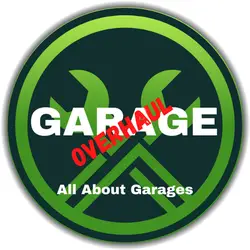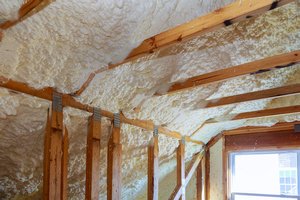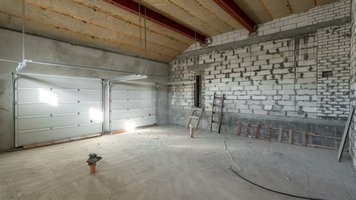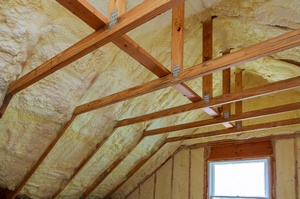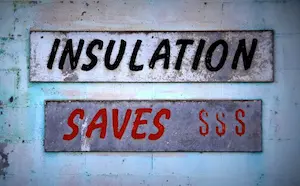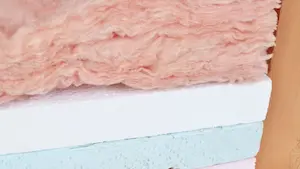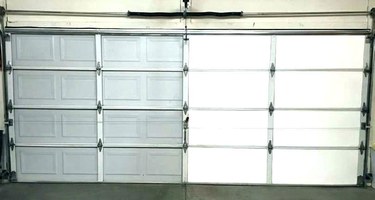Don’t Let Your Garage be a Cold Room – Insulate Your Walls
This post contains affiliate links.
Many garages have solid wall structures since they were initially designed as unheated areas. If you want to make the space livable, you’ll need to insulate them adequately because they permit excessive heat loss.
To insulate garage walls, first, you need to determine the R-value for your climate. Next, prepare the walls for insulation, choose an insulation material, and cut it to size after measuring; install and seal the insulation, finish the walls, and you’re done!
Keep reading below as we discuss the best way to insulate your garage walls.
How to Insulate Garage Walls
We’ve created a detailed guide on insulating a garage’s walls in this section.
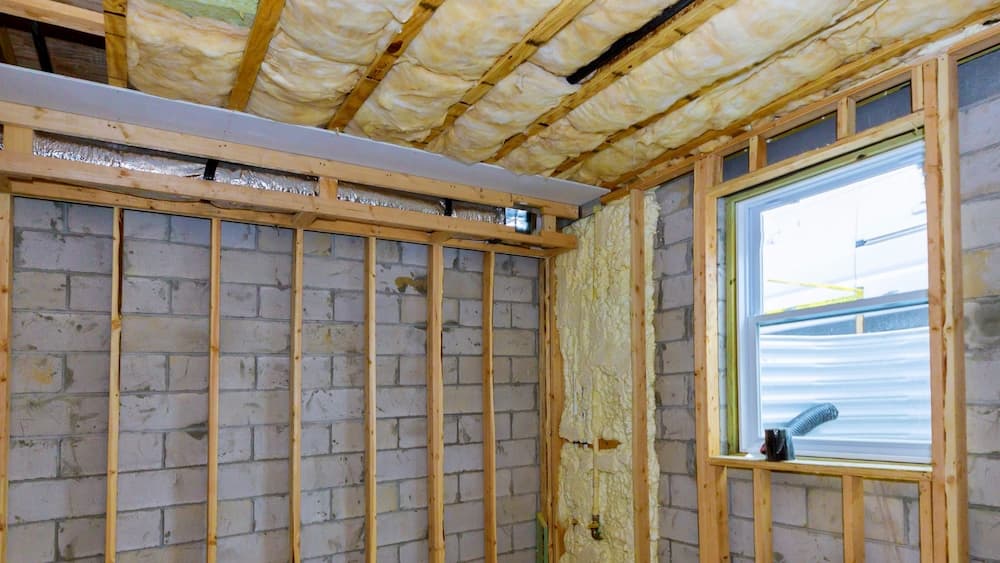
Determine the R-Value Needed for Your Climate
The R-value is a measure of a material’s ability to insulate. Different regions have different recommended R-values, so check the guidelines for your area to determine how much insulation is necessary.
An R-value of at least R-13 is recommended for most garages. However, it may vary based on your location and the desired level of insulation. For colder climates, you may need to use insulation with a higher R-value.
Read here what is the recommended R-Value for insulating garages
Prepare the Garage Walls for Insulation
Before installing insulation, make sure the walls are clean and free of any debris. Any holes or cracks should be filled with caulking or another appropriate sealant. If you have a finished wall, such as drywall, you will need to remove it to access the framing.
If you have a concrete or masonry wall, make sure it is clean, dry, and free of any efflorescence, which is a white powdery substance that can form on concrete and brick.
Choose an Insulation Material
There are several options to choose from when insulating garage walls, including fiberglass batts, spray foam, and rigid foam board. Fiberglass batts don’t provide the best insulation value. Spray foam insulation offers the highest R-value per inch and fills gaps and cracks effectively.
A rigid foam board is a good choice for insulating unheated garages or as a moisture barrier. It is vital that the insulation material chosen must be fireproof for garage applications. Fiberglass is not a fireproof insulation; in case of a fire, it will help the fire to spread quickly.
Measure and Cut the Insulation to Size
Measure the length and height of each wall section to be insulated and then cut the insulation to fit. If using fiberglass batts, make sure to measure between the framing members, such as the studs or joists, and cut the insulation to fit. It is important to wear gloves and long sleeves when handling insulation to protect your skin from itching and irritation.
Install the Insulation
If using fiberglass batts, unfold and lay the insulation between the wall studs. Be careful to keep the insulation flush against the wall. Make sure to compress the insulation slightly, so it fills any gaps or spaces between the framing.
For spray foam insulation, follow the manufacturer’s instructions for application. Spray foam insulation should be applied by a professional, as it requires special equipment and training to use safely.
For rigid foam boards, use construction adhesive or special foam board nails to attach the boards to the wall. Make sure to use a polyethylene vapor barrier between the foam board and the framing when applying foam board insulation.
Seal the Insulation
Once the insulation is in place, it’s essential to seal any gaps or holes with caulking or expanding foam to prevent air leaks. This will ensure that the insulation is adequate and that you’re not wasting energy.
Also, it’s essential to check for any electrical or plumbing penetrations, such as light fixtures, receptacles, and switches, that may have been missed before installing the insulation and seal them with the appropriate sealant.
Consider Adding a Vapor Barrier
A vapor barrier is a material that prevents moisture from entering the wall assembly. If you live in a high-humidity area or have a concrete or masonry wall, installing a vapor barrier behind the insulation is a good idea to protect it from moisture.
This can be done by installing a polyethylene sheet behind the insulation.
Finish the Walls
Once the insulation is installed, the walls can be finished with drywall or other appropriate materials. This will help improve the space’s appearance and make it more comfortable to use.
Read here for more on how to finish the garage walls.
Proper ventilation: Ensure the garage is properly ventilated and sealed to prevent moisture buildup, especially if you have a heating or cooling system installed. Good ventilation is essential to prevent moisture from building up and keep the garage air fresh.
For more information on how to insulate garage walls, watch this video below:
Benefits of Insulating Garage Walls
Insulating your garage walls can offer a number of benefits for both your home and your lifestyle. Here are some of the main benefits of insulating your garage walls:
Energy Efficiency
Insulating your garage walls can help improve your home’s energy efficiency by reducing heat loss in the winter and heat gain in the summer. This can lead to lower energy bills and a more comfortable living environment.
Temperature Control
Insulating your garage walls can help keep your garage temperature more consistent, regardless of the temperature outside. This can make it more comfortable to use the garage as a living or working space, especially in extreme temperatures.
Noise Reduction
Insulating your garage walls can also help to reduce noise transmission from the garage to the rest of your home. This can be especially beneficial if you have a workshop or other loud activities in your garage.
Moisture Control
Insulating your garage walls can help to prevent moisture from penetrating the wall assembly and causing damage to the insulation and framing. This can be especially beneficial in high-humidity areas, where moisture can be a significant problem.
Increased Property Value
Insulating your garage walls can improve the overall energy efficiency of your home, which can increase its value when it’s time to sell. And also making it more appealing to potential buyers looking for more comfortable and energy-efficient homes.
Improved Air Quality
Insulating your garage walls can improve air quality by reducing drafts and preventing outside air from entering the space. This can be especially beneficial if you use your garage for activities that produce harmful emissions, such as painting or welding.
For welding in a garage, check this article.
Increased Living Space
Insulating your garage walls can make the space more comfortable, increasing the amount of living or working space in your home. This can be especially beneficial if you have a large family or frequently entertain guests.
Reduced Carbon Footprint
Insulating your garage walls can help to reduce your home’s energy consumption and decrease your carbon footprint. This can be especially beneficial if you try to live a more sustainable lifestyle.
Increased Safety
Insulating your garage walls can also increase the safety of your home by providing a barrier against fire and other hazards. Fireproof insulation materials can help slow the spread of fire, giving you more time to evacuate safely in an emergency.
Types of Insulation for Garage Walls
When it comes to insulating garage walls, there are several types of insulation materials available. Each type has its own set of benefits and limitations, so it’s important to choose the proper insulation for your specific needs. Here’s an overview of some of the most popular types of insulation for garage walls:
Fiberglass Batts
Fiberglass batts are one of the most popular and economical types of insulation. They are made of fine glass fibers that are bound together to form a flexible insulation material. They come in pre-cut widths that fit between standard framing, making them easy to install.
They are an effective insulation solution and relatively cheap, but they don’t have the best insulation value of all materials.
Spray Foam Insulation
Spray foam insulation is sprayed directly onto surfaces. It can be applied to walls and ceilings, expanding to fill every gap and creating an air-tight seal. It has one of the highest R-values of all insulation materials and can effectively reduce drafts and control moisture. However, it can be quite expensive and requires special equipment and expertise to install.
Rigid Foam Board
Rigid foam board insulation is made from a dense plastic material that is cut into large panels. These panels can be attached to the garage walls with adhesive or special foam board nails.
They are easy to install, have a high R-value, and can effectively control moisture. They are also a good option for unheated garages. However, they can be relatively expensive, and some brands may not be as durable as others.
Cellulose
Cellulose insulation is made from recycled paper products, such as newsprint, that have been treated with fire-retardant chemicals. It can be blown in using a special machine, filling the walls completely.
This can be an effective insulation solution, but it can be quite messy, and it is crucial to have professionals install it.
Reflective Insulation
Reflective insulation is made of a foil material designed to reflect heat back into the room. It can be used in conjunction with other types of insulation to improve its effectiveness.
It can be instrumental in hot climates where heat gain is a major issue. This type of insulation is easy to install and relatively cheap, but it may not be as efficient on its own.
Read all about different insulation types in this and this article.
Conclusion
You may shield your garage from extreme temperature swings by installing insulation. Also, garage insulation enables you to have a cozy workspace throughout the year! We hope the instructions in this article prove helpful when you decide to insulate your garage walls.
